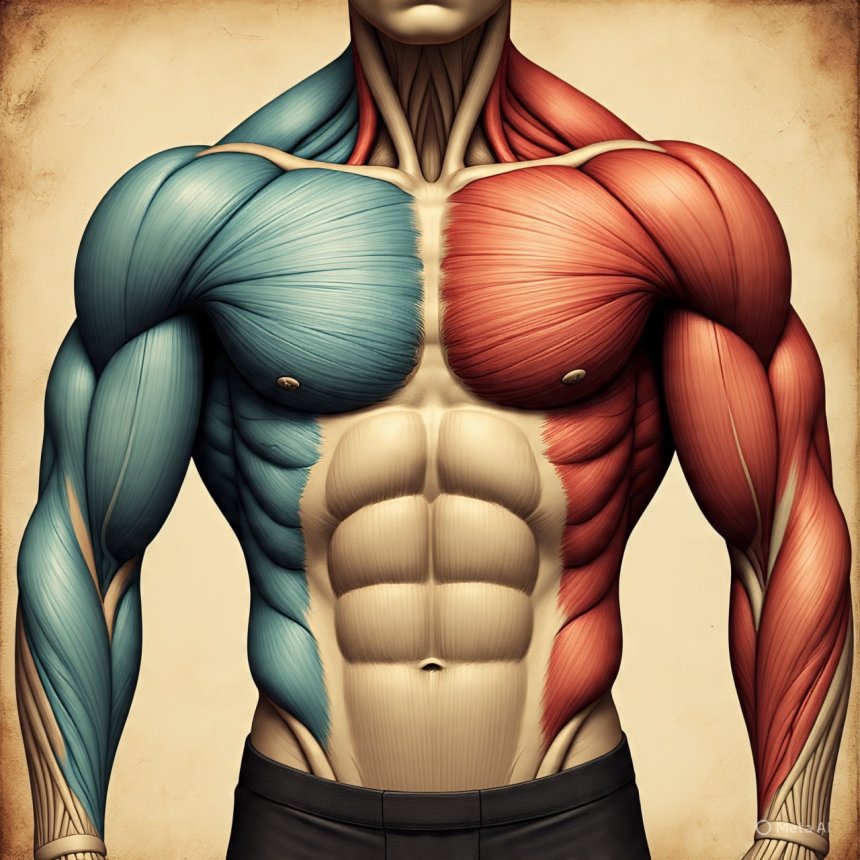Why Most Men Destroy Their Shoulders in the Gym (And How to Save Yours)
Discover why most men unknowingly destroy their shoulders in the gym—and learn expert-backed strategies to prevent injuries, optimize performance, and train pain-free.
"Why Most Men Destroy Their Shoulders in the Gym (And How to Save Yours)"
"Your shoulders are ticking time bombs—and every rep you do wrong brings you closer to disaster."

Most men walk into the gym with one goal: build bigger, stronger shoulders. But what they don’t realize is that their training habits are silently destroying one of the most vulnerable joints in their body.
By the time they feel the first sharp pain, it’s often too late—torn rotator cuffs, impingements, and chronic instability become their new reality.
But here’s the good news: you don’t have to be one of them.
In this deep dive, you’ll learn:
- The 5 biggest shoulder-wrecking mistakes most men make (without realizing it).
- How improper bench press, overhead press, and pull-ups silently damage your joints.
- The hidden role of muscle imbalances in shoulder injuries.
- Science-backed fixes to train pain-free and bulletproof your shoulders.
Let’s dive in.
Why Shoulders Are So Easy to Destroy

Your shoulder is a ball-and-socket joint—the most mobile (and least stable) joint in your body. Unlike your hips, which are deeply seated in a strong bony structure, your shoulders rely heavily on muscles, tendons, and ligaments for stability.
This makes them extremely vulnerable to:
- Overuse injuries (from repetitive movements like bench pressing).
- Poor form (arching too much, flaring elbows, improper ROM).
- Muscle imbalances (overdeveloped front delts vs. weak rear delts/rotator cuffs).
Most men prioritize vanity muscles (chest, biceps, front delts) while neglecting the stabilizing muscles that keep their shoulders healthy.
Result? A one-way ticket to chronic pain, rotator cuff tears, and forced time off from the gym.
The 5 Biggest Shoulder-Wrecking Mistakes (And How to Fix Them)
1. The Bench Press Trap
The bench press is the #1 exercise that destroys shoulders—not because it’s bad, but because most men do it wrong.
The Mistakes:
- Elbows flared at 90° (puts immense stress on rotator cuffs).
- Overarching the lower back (forces shoulders into an unstable position).
- Bouncing the bar off the chest (increases shear force on joints).
The Fix:
- Tuck elbows at 45° (protects rotator cuffs).
- Maintain a slight arch (not excessive) to keep shoulders stable.
- Control the descent—no bouncing.
2. Overhead Pressing With Poor Mobility

Forcing heavy overhead presses with poor thoracic spine mobility or weak rotator cuffs is a recipe for impingement.
The Mistakes:
- Pressing with a forward head posture (increases shoulder strain).
- Using too much weight with compromised form.
- Not engaging the scapula properly (leading to instability).
The Fix:
- Improve thoracic mobility with stretches and foam rolling.
- Start light and focus on perfect form.
- Strengthen rotator cuffs with band pull-aparts and face pulls.
3. Ignoring Rear Delts & Rotator Cuffs

Most men have overdeveloped front delts from too much pressing and weak rear delts/rotator cuffs—a deadly imbalance.
The Fix:
- 2:1 Pull-to-Push Ratio (Do twice as many pulling exercises as pressing).
- Prioritize face pulls, banded external rotations, and rear delt flyes.
4. Poor Pull-Up Form
Pull-ups are great—unless you’re doing them with internally rotated shoulders.
The Mistake:
- Letting shoulders shrug up to ears (causes impingement).
The Fix:
- Depress and retract scapula before pulling.
- Use a slightly wider grip to reduce internal rotation stress.
5. Skipping Shoulder Prehab Work

Most men wait until they’re injured before doing rotator cuff exercises. Big mistake.
The Fix:
- Spend 5-10 minutes daily on rotator cuff mobility & strengthening.
- Use resistance bands for external rotations and scapular stability drills.
Final Thoughts: Train Smart, Stay Pain-Free

Your shoulders don’t have to be a weak link. By fixing form imbalances, prioritizing mobility, and strengthening stabilizers, you can lift heavier, stay injury-free, and keep making gains for years.
Now, it’s your turn. The next time you hit the gym, ask yourself: "Am I training my shoulders—or destroying them?"
Share
What's Your Reaction?
 Like
0
Like
0
 Dislike
0
Dislike
0
 Love
0
Love
0
 Funny
0
Funny
0
 Angry
0
Angry
0
 Sad
0
Sad
0
 Wow
0
Wow
0













